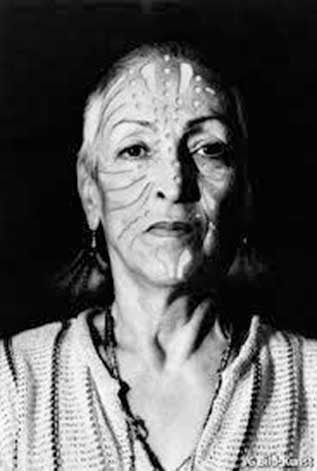Meret Oppenheim — Navigating the Male-Dominated Surrealist Movement
Meret Elisabeth Oppenheim was a Swiss, German-born, surrealist artist, known for her painting, sculpture, photography, and poetry, her feminist exploration of everyday objects rearranged as allusions to female sexuality and exploitation, and her ardent confrontation of the vague but painful distinction between life and death. Her artistic career was forceful, yet interrupted: she struggled to make (and maintain) a name in the Surrealist movement, which was largely overshadowed by her male counterparts, including Max Ernst, Giacometti, Duchamp, Picasso, Dali, Man Ray, and Andre Breton.
Representation is integral to an artist’s success: navigating a world in which her most popular work was, in fact, a series of nude portraits photographed by May Ray, Oppenheim spoke against this violence with her own work. Eventually, after the Second World War, Oppenheim resigned from the Surrealist movement, and re-created her space in the art world as a female artist, speaking of freedom, of individuality, of herself– going on to become one of the only female artists from the Surrealist Movement to gain international recognition while still alive.
Man Ray, reflecting on a group exhibition titled Object, called Oppenheim “Surrealism’s muse.” This term in itself is demonstrative of the exclusion of female voices from the larger narrative, despite being a merited artist– Ray reduces her to the role of a muse, as an external influencer instead of an integrated member of the Surrealist movement. Oppenheim expresses her difficulty in feeling like she belonged within the movement, and uses her art as a means of experimenting with her reality, with her identity, and her role within the community.
Oppenheim depicts herself through intricately carved sculptures, carefully arranged found objects, and stark black and white photographs. She recreates typical scenes from a surrealist perspective– for instance, her installation “Luncheon in Fur” displays a cup, saucer, and spoon, growing animal-like fur. She was interested in the abstract, the subconscious, the conflicting– her art hints at these themes, highlighting them with uncommon juxtapositions. Tables with the legs of a bird. Shoes stitched like a dish to be baked. A pot of honey with a squirrel-like tail. Oppenheim’s imagery is rich with the surreal, the impossible, the provocative.
And what role does the surreal, the impossible, the provocative play in making a woman’s voice heard? What does it take for a woman to be considered an artist and not simply an outsider, a muse? What we learn from Oppenheim’s journey as a female Surrealist is that success depends on recognition, and where recognition is scarce, it is sometimes essential to split oneself from the larger movement and to start another: one’s own, distinct, unmissable.
Kiara Puri
Image Courtesy: Hatje Cantz, Gems and Ladders, and Museum of Modern Art, New York
Find out more about the Artist and Gallery:
http://www.artnet.com/artists/meret-oppenheim/
https://www.instagram.com/meretoppenheimplatz/
https://www.fondation-giacometti.fr/en
https://www.duchamplondon.com/










